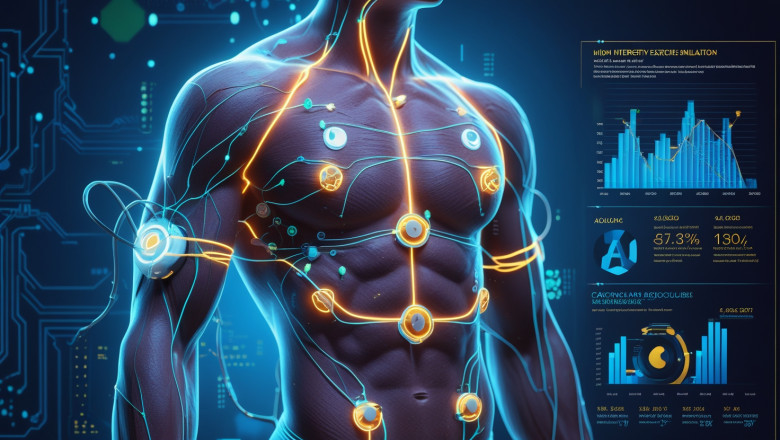views
AICAR (5-Aminoimidazole-4-carboxamide ribonucleotide) is a well-documented AMPK activator that continues to draw attention in performance recovery research. Initially developed for metabolic conditions, it has now become a subject of growing interest in simulated high-intensity exercise models, particularly for its ability to influence energy regulation, mitochondrial biogenesis, and cellular repair. For research teams exploring novel recovery pathways, peptides for sale like AICAR provide a compelling avenue for advancing current models of fatigue and endurance stress.
AICAR’s Mechanism of Action in Cellular Energy Restoration
The core of AICAR’s recovery benefits lies in its capacity to activate AMP-activated protein kinase (AMPK), the energy sensor of the cell. Upon activation, AMPK initiates multiple downstream processes, including glucose uptake, fatty acid oxidation, and mitochondrial biogenesis. These mechanisms directly address energy deficits induced by prolonged or intense exercise simulations.
In muscle tissue subjected to exhaustive training stress, AICAR enhances ATP production through increased mitochondrial efficiency and metabolic shift toward oxidative energy pathways. This is particularly relevant in research exploring chronic training stress, where consistent AMPK stimulation leads to improved recovery kinetics and reduced lactate accumulation in rodent and cell-based models.
Experimental data show that following a high-intensity load, the administration of AICAR helps maintain redox balance and reduces oxidative damage to cellular structures. These protective effects preserve muscle cell integrity and allow faster restoration of homeostasis, enabling sustained performance across repeated exertion bouts.
Such results have motivated institutions seeking Aicar for sale to evaluate it within protocols targeting fatigue resistance and improved regenerative recovery.
Enhancing Mitochondrial Biogenesis and Muscle Endurance
One of the hallmark effects of AICAR in performance research is its role in promoting mitochondrial proliferation within skeletal muscle. Unlike exogenous stimulants that offer temporary relief, AICAR modifies the cellular architecture itself, allowing for long-term adaptation to exercise-induced stress.
AMPK activation upregulates PGC-1α (peroxisome proliferator-activated receptor gamma coactivator 1-alpha), a master regulator of mitochondrial DNA replication and function. In various preclinical models, this results in increased mitochondrial density, enhanced oxidative phosphorylation, and greater muscle endurance.
Recovery following high-volume resistance or interval training simulations often depends on the muscle's capacity to recycle ATP efficiently. AICAR’s consistent activation of the AMPK-PGC-1α axis ensures improved energy restoration while maintaining lean muscle composition. These adaptations reduce reliance on anaerobic pathways, lowering the risk of lactate buildup and early fatigue onset during successive exertion intervals.
Inflammation Modulation and Muscle Regeneration Post-Exertion
Inflammatory responses are a critical component of exercise recovery, but when prolonged, they hinder performance restoration and tissue repair. AICAR has demonstrated anti-inflammatory properties through the suppression of NF-κB (nuclear factor kappa-light-chain-enhancer of activated B cells), which regulates the expression of pro-inflammatory cytokines like IL-6 and TNF-α.
In studies where inflammation was artificially induced to mimic training-induced muscle damage, AICAR administration significantly reduced cytokine levels, accelerated macrophage clearance, and promoted tissue regeneration. This was complemented by improved satellite cell activation, which plays a central role in muscle fiber repair.
The combination of inflammation modulation and regenerative stimulation makes AICAR particularly suitable for protocols focusing on fast-track recovery cycles. Its dual-action approach minimizes downtime while preserving performance output in simulated testing environments.
Metabolic Flexibility and Glucose Utilization in Recovery Models
High-intensity training simulations place a high metabolic demand on glucose regulation. AICAR enhances glucose transporter type 4 (GLUT4) translocation in skeletal muscle, increasing glucose uptake independent of insulin pathways. This feature is particularly beneficial in models where insulin sensitivity may be impaired due to overtraining or metabolic fatigue.
Improved glucose utilization helps replenish muscle glycogen stores more rapidly, enabling faster readiness for subsequent workloads. Additionally, AICAR shifts the substrate preference toward fatty acid oxidation, sparing glycogen stores and further improving endurance capacity in extended simulation protocols.
These metabolic shifts contribute to greater efficiency in nutrient partitioning and energy distribution key elements in comprehensive performance and fatigue recovery frameworks.
Conclusion
AICAR remains one of the most promising compounds in the realm of recovery-focused exercise research. Through AMPK activation, it initiates powerful physiological cascades that enhance mitochondrial health, suppress inflammation, restore energy balance, and improve overall recovery kinetics in high-intensity simulation environments.
Its multifunctional benefits ranging from improved glucose handling to accelerated muscle regeneration make it a preferred research candidate for performance scientists investigating sustainable recovery strategies. As the demand grows for precision-driven recovery compounds, AICAR continues to stand out in both acute fatigue and long-term endurance adaptation studies.














Comments
0 comment